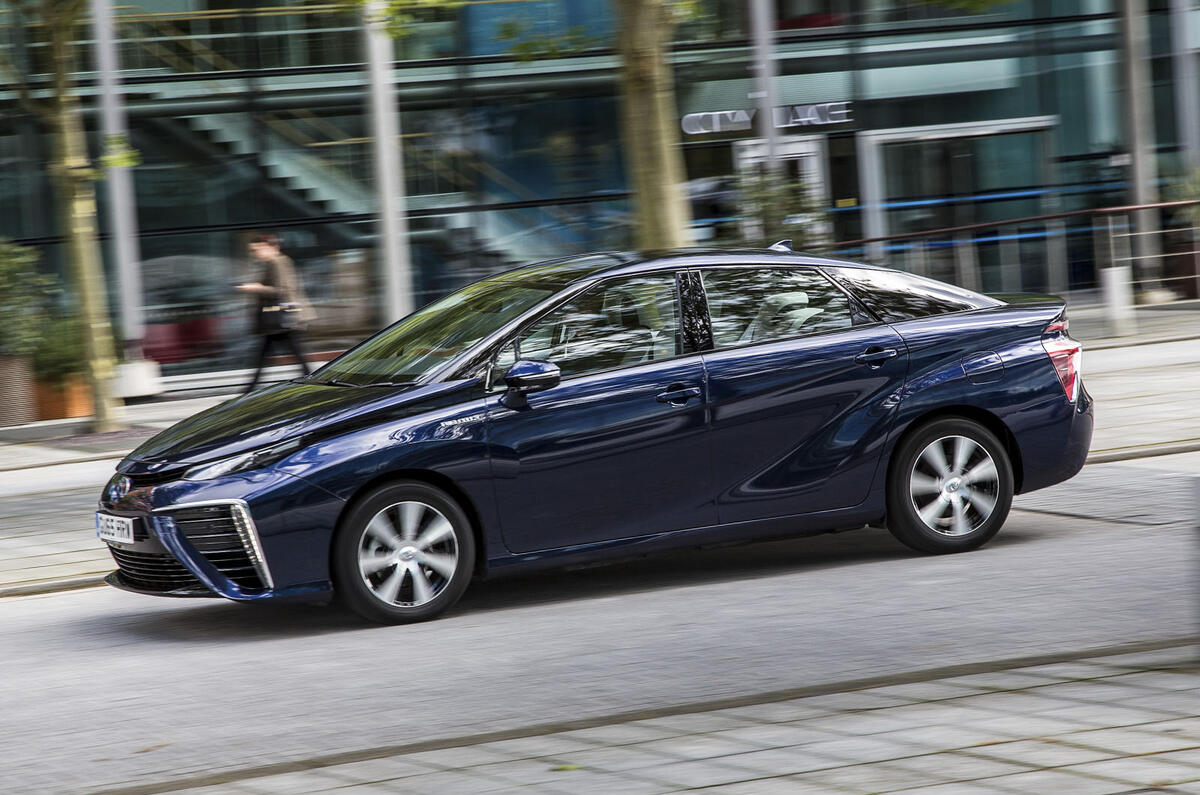Philosophy is not a strong point of mine. It’s not really a point of mine at all, to be honest; I can’t tell you whether the chicken or the egg came first, let alone offer anything thoughtful on the subject.
The chicken or the egg phrase is one I remember being repeatedly used at the World Future Energy Summit I attended in Abu Dhabi back in 2011, as various eggheads (or chickenheads) debated whether or not hydrogen fuel cells would ever become a viable propulsion method in future cars.
Neither the cars nor the infrastructure existed at that point, and it wasn’t clear if either was going to be forthcoming in the short or medium term after the pioneering Honda FCX Clarity had already been and gone.
Today, at last, we now have both the chicken and the egg in the UK. For I’ve just driven the Toyota Mirai on a shiny new 65-plate, one of 30 or so Mirais that will be in the UK by the end of 2016. By that point there will be nine places in the UK you can fill it up, up from the three sites currently open.
Around 3000 Mirais will be produced in total by the end of 2017. The Mirai will be joined by, among other hydrogen cars, a new fuel-cell vehicle from Honda that's due to be revealed at next week’s Tokyo motor show, plus likely efforts from Nissan, BMW and Mercedes-Benz, who are making more noises about the technology. Japan and Germany are getting serious about creating infrastructures, too.
So make no mistake: hydrogen cars are here, and a network, however small, is being developed to support them.
After all the talk, it’s pleasing to report what a revelation the Mirai is to drive. Greg Kable can tell you more about it here, but for me the overriding impression was just how quiet and smooth it is. It’s soothing, something genuinely different and a car that’s excites as the occasional whoosh from the drivetrain reveals this to be a long way from your average Toyota Avensis. It is the future, or at least a version of it.
The last time I drove a car that felt so genuinely different to drive was when having a whizz around the car park at Nissan’s Sunderland factory in one of the first Leaf prototypes. So impressive and unexpectedly strong was the step-off that at the time it felt like a Ferrari 458’s launch control.









Join the debate
Add your comment
Amendment
It's not particularly worthwhile, as it'd be cheaper to just replace the battery pack once the car's ten years old (which is when they expect mild reduction of maximum charge). Does lower the initial Leaf purchase cost though.
Hydrogen!?
Pop culture loves a blonde bombshell, but I can't see this one appealing quite as much.
£66k?
Erm,
TO: elon.musk@tesla.com,
subject: new order...
etc.
So this doesn't just take tap-water and get you across the continent, pumping out nothing but pure oxygen as the H is plucked free from its 2O.
Maybe then...
Hydrogen!?
Pop culture loves a blonde bombshell, but I can't see this one appealing quite as much.
£66k?
Erm,
TO: elon.musk@tesla.com,
subject: new order...
etc.
So this doesn't just take tap-water and get you across the continent, pumping out nothing but pure oxygen as the H is plucked free from its 2O.
Maybe then...
Hydrogen!?
Pop culture loves a blonde bombshell, but I can't see this one appealing quite as much.
£66k?
Erm,
TO: elon.musk@tesla.com,
subject: new order...
etc.
So this doesn't just take tap-water and get you across the continent, pumping out nothing but pure oxygen as the H is plucked free from its 2O.
Maybe then...